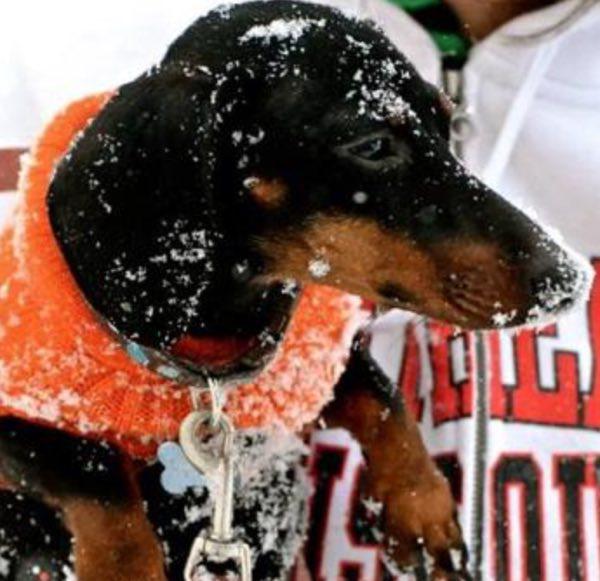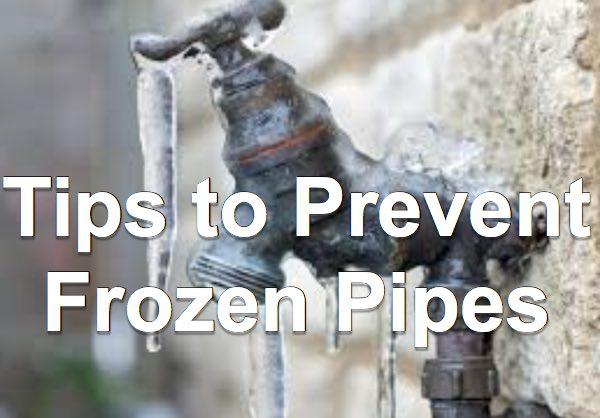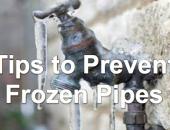
Dexter, Missouri - With the upcoming drop in temperatures it safe to say that our fluffy friends can not handle this type of extremely cold weather. Here is a list of helpful tips from the Human Society of Missouri that will help protect your pet during frigid conditions and keep them safe.
Bring Your Pet Inside: If your dog or cat normally stays outside please bring them in even if it’s in the garage. Thermometers show one temperature, but wind chills can make it feel much colder. Limit time outdoors and be mindful of frostbite on ears, tail and paws. Dogs and cats who stay indoors can’t handle these extreme temperature changes for long periods of time.
Acclimate Your Pets to Cold Weather: If your pets spend a lot of time outdoors, but typically live inside; make sure to introduce them gradually to dropping temperatures, rather than exposing them to the extreme cold all at once.
Provide Adequate Shelter: If your dog lives outdoors, you must provide a well-insulated and draft-free doghouse. The opening should face south with a sturdy, flexible covering to prevent icy winds from entering. Line the floors of the shelter with straw, not hay or towels/blankets. They can become damp or freeze making the space even colder.
Beware of Antifreeze and Rock Salt: Antifreeze often collects on driveways and roadways. Although it smells and tastes sweet to your pet, it is lethal. Deicing products like rock slat can irritate footpads. Be sure to rinse and dry your pet’s feet after being outside.
Dry Off Wet Pets: A wet pet is a cold pet. Towel dry your pet if he gets we from rain or snow. Also, it is important to clean and dry paws to prevent tiny cuts and cracked pads.
Provide Plenty of Food and Water: It takes more energy in the winter to properly regulate body temperatures, so your pet needs additional calories if he spends a lot of time playing or working outdoors. Your pet is just as likely to get dehydrated in the winter as in the summer; so be sure to provide plenty of fresh water. Refill outside owls often to prevent freezing.
Shown in the photo is Maddie Loflin, grand-pup to Dee Loflin.

Dexter, Missouri - With temperatures dropping below freezing and wind chills near zero the city of Dexter reminds residents that preventative measures are necessary to help keep your water bill and other expenditures to a minimum.
Here are some handy tips!
1. Shut Off the Water to Outside Spigots - To keep outdoor plumbing fixtures from freezing, disconnect and store any garden hoses. Then, shut off the water to your outdoor faucets; drain the lines; and insulate the hose bibs.
2. Check the Exterior Walls of Your Home for Holes - Even small holes where cable wires or phone lines enter your home can be an entry point for freezing air. Purchase a tube of foam insulation, and close them up. Then, use weather stripping to remedy any cracks around your doors.
3. Check Your Home's Water Meter Cover - If you don't have a cover over your water meter, throw a blanket or straw over the top just to help insulate the meter.
4. Insulate. Then, Insulate Some More - Prevent your pipes from freezing by making sure your home has adequate insulation. This includes insulating your exterior walls, crawl space or basement, attic and – in many cases – the pipes themselves.
5. Set Your Faucets to Drip - If any of your indoor faucets are located on exterior walls that aren't adequately insulated, set your faucets to a slow drip whenever temperatures dip below freezing. For maximum effectiveness, make sure both the hot and cold lines are opened slightly (since both are at risk of freezing). Also consider leaving cabinet doors open, so your pipes will be warmed whenever your home's heating system kicks on.
6. Clear a Path to Your Main Water Shut Off - If a bunch of junk is blocking easy access to your main water shut valve off, rearrange your basement or garage, so it will be easily accessible in the event of a plumbing emergency. Then, make sure your shut off valve is in good working order. Cranking it all the way to the right should shut off all water to the house. If it's rusted open or only closes partially, replace the valve immediately.
7. Keep Your Garage Door Closed - If your garage is attached to your home, minimize the time your garage door is open. This will help to keep cold air out of your house and protect your hot water heater and any other plumbing that you may have in the garage.
8. Keep Attic Vents and Soffits Clear - Proper attic ventilation is vital to preventing ice dams on your roof. Inspect your attic to make sure there's no insulation blocking your soffits or attic vents.
9. Keep Spare Batteries for Your Thermostat - Make sure you'll be able to keep your thermostat running continuously by keeping spare batteries on hand. Sometimes it's the small details that save the day.
10. Keeping the Heat On - If at all possible keep the temperatures warm inside your home. It may cost a little extra to run the heat while gone, but it could be a disastrous claim if a water pipe busts and floods your home and all of its contents.














